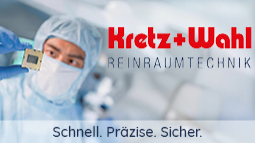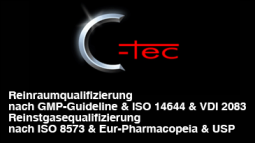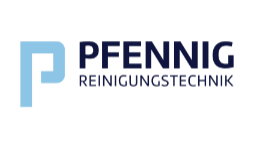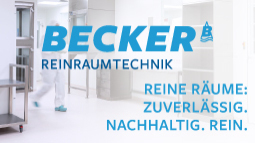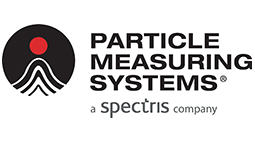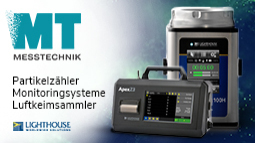Particle and VOC emissions of resin-based industrial floors
The Sika Germany GmbH brought a new generation of running industrial floor coatings on the basis of two-component epoxy resins on the market. They were developed particularly for the requirements in the pure area. A decrease of the molecular emission was realized � without losses at mechanical and chemical maximum stress � on a Drei�igstel opposite conventional epoxy resin coatings. The pure space fitness of these coating systems is by particle emission measurements dependent on load and whereupon based ISO classification belegt.1. Pure areas and pure BereicheDie trend for the miniaturization of technical components on the one hand � as for example the decrease of the structural widths of electronic construction units in the semiconductor industry � and rising requirements of the product quality in medical technology, food and pharmaceutical industry on the other hand, lead too constantly growing requirements at production processes and their surrounding field. From this the necessity under � pure � conditions results to manufacture, i.e. that individual as well as molecular impurities, which affect the production process or the product quality negatively must be held on a usually very low level. In pure areas and assigned pure ranges the concentrations are airborne particle and airborne molecular impurities (airborne molecular contaminations, AMC) relevant purity factors, which are regulated with the help of constructional measures. Apart from the filtering are temperature, dampness, pressure and change of air rate relevant parameters, in order to hold contamination on the necessary low level. Although the weighting of the different purity factors is branchdependent, an increasing meaning of purity-suited materials can be nevertheless generally observed. A substantial aspect of the classification of pure areas depends on the particle purity of air and according to DIN EN ISO 14644 [1] in ISO classes is indicated. Number and size of particles play the crucial role. The total value of the airborne molecular concentration of individual species or a Kontaminantenfamilie determines thereby the classification in ISO-AMC-Klassen.2. Molecular emissions of industrial floor-volatile substances from materials or from materials of the production environment, to which also industrial floors count, can represent a contamination risk in principle. The fact that the separation of Organophosphorverbindungen and tertiary amines on Wafern causes damages is well-known. However almost no realizations are available over the effect of other substances. Thus one goes momentarily the way reducing apart from the exclusion of well-known problematic emitters the entire mission to a minimum. From it the necessity, materials with analytics adapted to the problem definition results regarding its molecular emissions to charakterisieren.2.1 VOC /AMC AnalytikDie methods GC/MS and/or GC/MS FID is established as analysis methods to VOC /AMC analytics. The procedures of the emission measurement, in the broader sense thus and task of sample, are diverse against it. Also the DIN EN ISO 14644 creates here no clarity, since no concrete method of analysis is given. Often in-house measuring procedures are accomplished, which are to a large extent unknown completely particularly co-ordinated with questions of the respective production process and to the material supplier for the pure area. In the following some measuring procedures are described briefly: During the emission chamber measurement (Abb.1) an inspection piece is given to a chamber and its emission under exactly defined and controlled parameters is measured, how change of air rate, - moistens, - speed, temperature (normally 23�C) and space loading. In addition the emission chamber atmosphere on an adsorbent is collected and afterwards the loaded adsorbent by means of Thermodesorption GC/MS (TD-GC/MS) is analyzed. Parallel to it the entire mission during the test chamber measurement with a on-line FID be noted and the results of the TD-GC/MS-analysis can thus be verified. The thermal extraction procedure (Abb.2), with which small samples in defined geometry and controlled air flow at ambient temperature is examined, is from the principle similar to an emission chamber. The thermal desorption to the analysis of material degassings is likewise far common. With this procedure a small part of the inspection piece is usually analyzed � few milligrams � directly by means of Thermodesorption GC/MS (Abb.3). Comparatively high sample temperatures descriptive by 90�C, as for example in the VDA 278 [2], are quite usual. With such methods of analysis, which work partially at strongly increased sample temperatures, less the emission behavior of individual materials is the center of attention during the use, but � actually totally outgassing �. The components are to be detected and identified, which outgas in principle from a material and can as � airborne molecular contaminations � if necessary be process-damaging. For floor coatings such high-temperature techniques, with which the inspection temperature is the far over customs temperature, represent regard into several a hard examination. The sample temperature, at which it is measured lies the far over glass transition temperature of the coating, whereby the material properties change dramatically. With such procedures, with which the sample in form of a splinter is taken out of an inspection piece, the problem of the open edges plays a large role. The emission is made in such cases by an undefined surface of the test specimen, while in the material installation condition of a floor the VOC emission can be made only by its surface [3] .2. 2 main memo ducks and emission reduction decrease it seems incomprehensibly that also solvent-free coatings, which represent the state of the art must be developed on rising VOC requirements. Because on the one hand the definitions of solvent and VOC are not the same: In the TRGS 610 [4] a solvent is fixed as volatile organic compound with a boiling point (with normal print) of � 200�C, whereas the VOC definition includes in principle all volatile organic compounds with a boiling point of � 250 �C [5]. On the other hand often only the pure space operator knows those emitters, who are disturbing in its process. The VOC emission of two-component epoxy resin coatings is determined considerably by benzyle alcohol. By reactive solvents brought in impurities at langkettigen alcohols and by additives brought in quantities � genuine � solvents are not relevant on [3]. The system characteristic of a formulation of model shows the substantial connections and influence possibilities on the emission of benzyle alcohol. Here the benzyle alcohol content were varied and the emissions by means of TD-GC/MS with 90�C were determined in each case. So a linear connection between benzyle alcohol content, glass transition temperature and benzyle alcohol emission can be found for industrialusual two-component epoxy resin floor coatings (fig. 4). By purposeful new formulations it is possible to reduce that for benzyle alcohol content and emission-reduced to develop ready for the market two-component epoxy resin ground coatings. Under large retention of the used application characteristics the entire mission of these new products knows werden.3 in relation to past standard products lowered on a third up to a Drei�igstel. Particle emission and of them measurement always then, if under mechanical load of materials or construction units abrasion develops, are these a source for particle emissions. This is valid naturally also for industrial floors, with which typical load scenarios lead like a driving on with elevating truck platforms or the abrasion by chair roles to the emergence of particles. So far world-wide no standardised procedure for the determination of the purity fitness of materials was available. The industrial consortium Cleanroom Suitable of material (CSM), which of the Fraunhofer Institut production engineering and automation � Fraunhofer IPA � in the life was briefly called, is concerned with these questions [6]. The Sika Germany GmbH is since 2005 member in CSM.Das Fraunhofer IPA the test stand material Inspec (Abb.6) developed, with which standardised particle emission tests of most diverse combinations of material can be accomplished. Thus the pure space fitness of materials can be evaluated and a comparison of different combinations of material be obtained. On the basis the results of measurement then an evaluation of the particle emission is possible regarding the air categories of purity after EN ISO 14644-1. For the investigation of floor materials the so-called role disk test (fig. 7) is suitable in particular. This test simulates the load of ground coatings or - surfaces by mobile Ger�tschaften. The base consists of an aluminum disk, which is coated with the floor material which can be examined. The Gegenk�rper consists of a PP wheel, which is pressed with a defined normal force on the rotary disk. The particles produced under the load are measured continuously in an optical particle counter. From the attempts realizations can be won for the characterisation of the particle emission behavior, the size distribution of the emitted particles as well as the absolute number of emitted particles, on the basis those the ISO classification made wird.4. Result by purposeful new developments also building materials can make such as floor coatings a contribution for the reduction of airborne molecular contamination and particle emission. The straight development of emissionsarmer two-component epoxy resin ground coatings is a special challenge, since the formulation-technically extremely important raw material benzyle alcohol must be avoided there as a main emitter. Further development steps to almost VOC free two-component epoxy resin ground coatings were already realized and converted into ready for the market products, whereby here completely new technologies were used. In the industrial consortium the Cleanroom Suitable of material (CSM) developed standardised method for the particle emission measurement of materials is applicable also to floor coating systems. Thus it is possible for the all first time to examine and finally dependent on load characterize the particle emission from floor coatings to. The results of the particle emission measurement permit the direct classification of materials in ISO classes. Thereby transparency is created which opens the possibility to the user with one another of comparing different materials and also different products on the basis of objective results of measurement. The new development Sikafloor 266 CR was already successfully examined concerning degassing and particle emission and certified by the Frauenhofer IPA as clean-spacesuited floor coating.��Literature [1] DIN EN ISO 14644: Pure area and associated pure space ranges [2] VDA 278 (edition 2002-09) thermal desorption analysis of organic emissions for the characterisation of non-metallic Kfz materials [3] C. Zilg, J. Gr�tzinger: � VOC reduction in resin-based industrial floors: Main memo ducks, their regulation and avoidance �; 6. International colloquium industrial grounds `07; Technical academy Esslingen [4] technical rule for dangerous materials of 610 � substitutes and substitution methods for strongly l�semittelhaltige pre-coatings and adhesives for the ground range, edition March 1998 BArGBl. Number 5/1998 [5] Seifert, B. (1999): Appoximate values for interior air: TVOC. Federal health sheet 42 (3), 270-278 [6] Dr. - engineer Udo Gommel, Fraunhofer IPA; Department of Reinst and micro production, telephone: +49 (0) 711/970 1633, email: udo.gommel@ipa.fraunhofer.de�� Sika Germany GmbHAls subsidiary company that global transact Sika AG, Baar/Switzerland, rank the Sika Germany GmbH among the offerers of bulge out-mixed product systems and industrial close and adhesives, leading world-wide. �
This text was translated automatically.
Sika Deutschland GmbH
70439 Stuttgart
Germany
